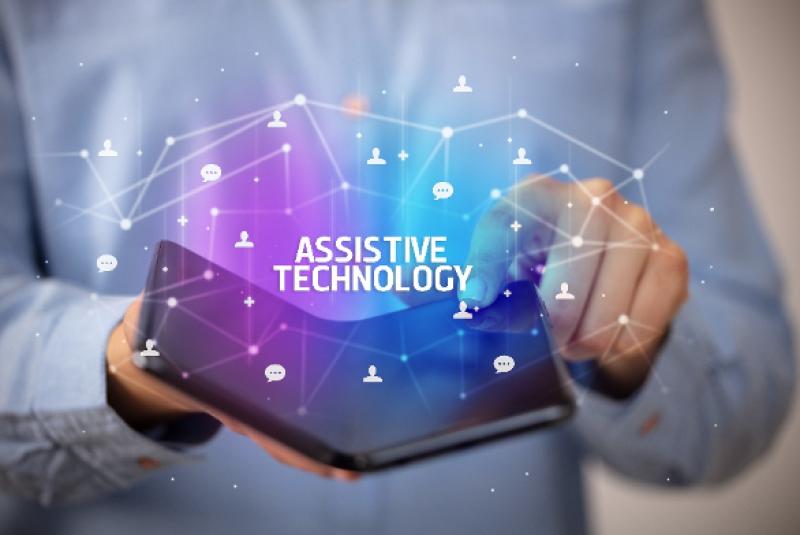How Assistive Technology Is Applied in Occupational Therapy

Assistive technology is a great enabler for those undertaking occupational therapy. In summary, occupational therapy aims to help people of all ages with practical tasks they have difficulty performing. Occupational therapy can help you if you are physically disabled, recovering from an illness or operation, have learning disabilities, have mental health problems, or are getting older.
Occupational therapists (OTs) look at all aspects of daily life in a person’s home, school, or workplace to determine which activities a person finds difficult and see if there’s another way that person can do them.
What is assistive technology?
Assistive technology is any device or system that allows an individual to perform a task that they would otherwise be unable to do or increases the ease and safety with which the task can be performed (Royal Commission on Long Term Care, 1999). In the context of occupational therapy, examples of assistive technology include the following:
- Hand or grab rails positioned in key places around the home or workplace
- Hearing aids
- Mobility aids (wheelchairs, walkers, crutches, prosthetic devices)
- Ramps, specialist lighting, or automatic door openers in community buildings and businesses
- Toileting or bathing/showering aids
- Voice recognition software, screen readers, or enlargement applications
The above is an incomplete list of the numerous assistive technologies available to those undergoing occupational therapy. There’s a distinction between those technologies where active engagement is needed from an individual to operate them and those that don’t require active engagement. These are distinguished as active-client technologies and passive-client technologies. Active-client technologies include eye-gaze systems, rehabilitative applications on a computer or tablet device, and voice recognition software. Passive-client technologies that don’t require the individual to operate include movement-activated lighting and fall-detection systems.
How is assistive technology used in occupational therapy?
Before assistive technology is used as part of an individual’s occupational therapy, an occupational therapist (OT) will determine what type(s) of assistive technology would benefit the patient. An OT will assess their abilities and consider assistive technology based on their needs.
It is critical for an OT to know the range of technologies available and make the right choices when choosing or recommending them to their patients. While the right technology can make all the difference in promoting function and independence, the wrong technology can hinder an individual’s progress and escalate or extend their dependence on family, friends, or formal care. It is, therefore, vitally important for OTs to carefully consider a client’s abilities and needs and the suitability of assistive technologies for improving a client’s ability to perform everyday tasks. The poor choices made by an OT can prove costly to the organization they represent and be incredibly disappointing and frustrating for clients.
While it’s important to carefully consider the options and uses of assistive technology available to clients, now is a great time to be an OT. The advent of the digital age has meant that technologies are developing more rapidly than ever before, especially in terms of digital communications. The emergence of new digital technologies has given a specific meaning to the term assistive technology. While hand/grab rails are considered assistive technology, there’s a growing trend to use assistive technology only to refer to digital technologies such as computers or other electrical devices.
Take the next step as an OT practitioner
If you already have a master’s degree and want to take your career as an occupational therapist (OT) to the next level, then the online post-professional occupational therapy doctorate (post-professional OTD) at American International College (AIC) could be what you’re looking for.
AIC’s post-professional OTD is one of the best OT doctoral programs in the country. It’s designed for engaged occupational therapists holding a master’s degree and wanting to continue working while earning a doctorate. However, a three-course bridge program is available if you have a bachelor’s degree. With a post-professional OTD, you can become a better leader in the field, increase your expertise, and inspire the next generation of OTs as you share your knowledge with them.
For a complete learning experience, the program intertwines four curriculum threads: clinical practice, education, research, and advocacy. Classes are 100% online, and you can graduate in less than two years while studying full-time. You can discuss ideas with fellow students while connecting and fostering professional relationships with faculty and peers. There’s ample opportunity to learn from an engaged faculty of scholars, practitioners, and leaders. Once you’ve learned the necessary skills to enhance your career as an OT, you can then impart your knowledge by becoming a leader and mentor to future OT practitioners. Employ transactional research. Your evidence-based practice and research in clinical, community, and academic settings can contribute to the growth and advancement of the OT profession.
Why assistive technology is so important to occupational therapy
This article has explained assistive technology and its use in occupational therapy. The right technology can significantly improve a person’s overall quality of life. As the number of assistive technologies continues to grow, so does the potential for both assistive technology and occupational therapy to help more people than ever before. Occupational therapists (OTs) need to be aware of the latest developments in assistive technology. Such awareness can then be applied in innovative ways to provide the most suitable, up-to-date recommendations and care to individuals undergoing occupational therapy.
More to Read:
Previous Posts:








